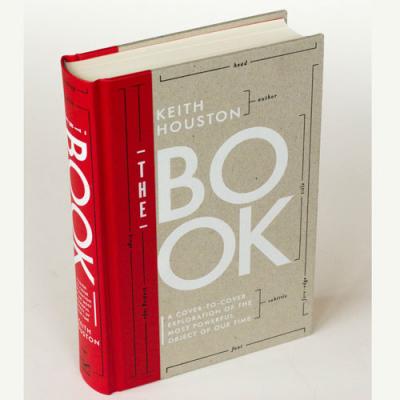A Review of The Book: A Cover-to-Cover Exploration of the Most Powerful Object of Our Time
Everything you didn't know about the "bookness" of books
Anyone who cares about books – what they are more than what a particular volume might contain – will relish this book. Incorporating history, detective work, mechanical engineering, archeology, chemistry, animal husbandry, monasticism, metalsmithing, and so many other subjects that listing them would fill this page, Keith Houston has composed a love poem to both "the quiet apex predator that won out over clay tablets, papyrus scrolls, and wax writing boards" and to those earlier forms as well.
This may be the most beautifully designed book I've ever held in my hand. Printed on 81-pound paper with a finish like fine leather, trimmed into octavo quires, and double-cord sewn, it falls open to pages featuring red capitals and dingbats and a sturdy Jenson font derived from 15th-century type-cuts in turn derived from ancient Roman lettering. Full-color illustrations display such riches as a papyrus fragment from a 4th-century copy of *The Iliad; schematics and photographs of various printing presses; German and Chinese woodcuts; a page from the *Book of Kells; and the opening of the *Diamond Sutra, the earliest dated, printed book in human history.
Much as I'd like to take credit for already knowing the terms I tossed around in the preceding paragraph, I can't, but Keith Houston is as fine a teacher as he is a writer. The cover of *The Book constitutes his first lesson, each element labeled so the reader knows immediately what the "hinge" is, as well as the "foot," the "fore-edge," and the "head-cap." His elegant, transparent, witty style makes clear what in less-skilled hands would bewilder and frustrate. He makes each arcane fact, each accident of history, each dead-end or triumph of bookmaking technology exactly as marvelous as it always has been.
Once you've read *The Book, you'll know what we know as a book is actually a codex. You'll know the vivid reasons codices have spines. You'll know why uterine vellum was the finest paper ever made, precisely how to make it, and why you won't want to. Most of all, you'll enjoy leafing through it just to touch the pages again, knowing as you do why "pages" are "leaves."
The Book, by Keith Houston, W.W. Norton & Co., 2016, 428pp., $29.95
John Repp grew up near the Palace Depression in Vineland, New Jersey. He has taught writing at Edinboro University since 1991.




